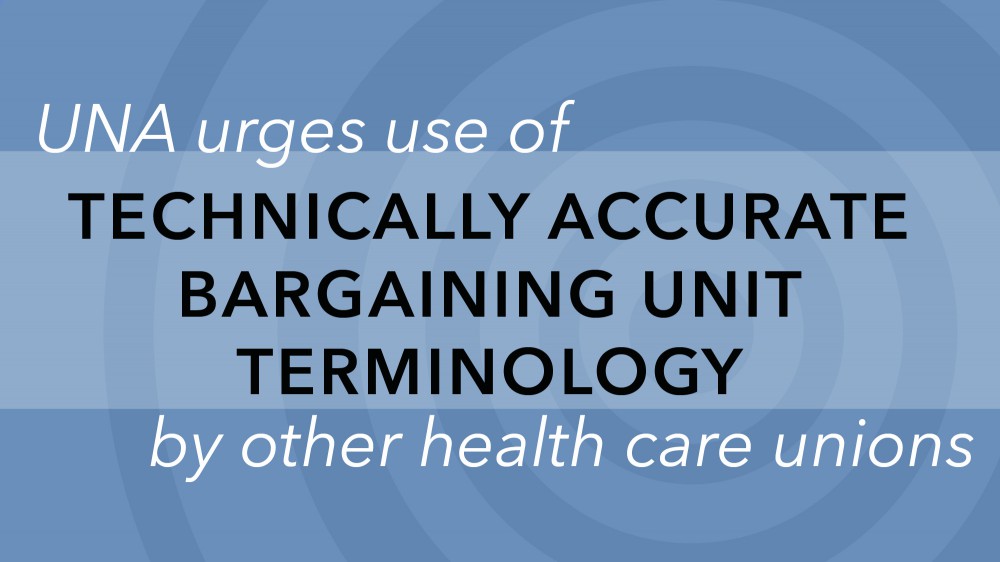UNA congratulates AUPE and its new Auxiliary Nursing Care members but advises use of more accurate bargaining unit terminology by AUPE
While United Nurses of Alberta is pleased that the Alberta Union of Provincial Employees has organized Auxiliary Nursing Care employees at Calgary’s Wentworth Manor nursing home, clarification is needed of some of the terms used in AUPE’s Feb. 5 news release announcing the success of its unionization drive.
According to the news release, AUPE now represents 150 Auxiliary Nursing Care (ANC) employees at the Calgary facility, a classification that under the terminology embedded in collective agreements and certificates from the Alberta Labour Relations Board, and used throughout the Alberta health care system, includes Licensed Practical Nurses (LPNs) and Health Care Aides (HCAs).
However, some UNA members have expressed concern about the claim in the AUPE news release that the union represents nursing employees, leaving the impression it is the union for all nurses throughout Alberta.
While AUPE does now represent LPNs in the ANC bargaining unit at most public health care and many private worksites in Alberta, UNA is the bargaining representative for members of the Direct Nursing functional bargaining unit, which includes Registered Nurses (RNs) and Registered Psychiatric Nurses (RPNs).
Unfortunately, an earlier AUPE bargaining update for members of its ANC locals also left the impression that nurses employed by Alberta Health Services have not reached an agreement. In fact, UNA members will vote on Feb. 15 on a tentative agreement that will provide complete job security for RNs and RPNs represented by UNA, as well as an independent external assessment committee able to deal with nurses’ issues related to patient/resident/client care.
UNA represents about 30,000 RNs and RPNs in bargaining. AUPE represents approximately 14,000 LPNs and HCAs.
It is important to remember that under the Alberta Nursing Home Act, the term “nurse” is defined to mean a Registered Nurse, a Registered Psychiatric Nurse or a Certified Graduate Nurse.
LPNs are important members of the health care team, whose practice is regulated by a separate licensing body. HCAs, while an important part of the health care team in any health facility, are not nurses and are not members of a regulated profession. Under the Nursing Home Act, both LPNs and HCAs are considered “personal services staff,” not nurses.
UNA acknowledges that there is merit to the argument of many LPNs should be considered to perform direct nursing care. However, addressing that question would be a complicated process involving input from unions, the provincial government, and health service providers including Alberta Health Services. To date, employers, AUPE, and the Labour Relations Board have maintained that LPNs perform only “auxiliary nursing” and are not performing “direct nursing care.”
UNA believes this fails to recognize the evolution of scope of practices and ignores the reality that the Health Professions Act, which specifically states that LPNs in their practice “apply nursing knowledge, skills and judgment to assess patients’ needs … provide nursing care for patients and families, and … provide restricted activities authorized by the regulations.”
However, this is the current legal state of labour relations in Alberta today.
There are two other functional bargaining units for unionized public-sector health care employees in Alberta: General Support Services workers, who do not provide bedside care and are also represented by AUPE, and Paramedical, Professional and Technical Services workers who are not physicians or nurses and are represented by the Health Sciences Association of Alberta.
Physicians bargain collectively with the province through the Alberta Medical Association but unlike other health care workers are not covered by Alberta’s labour relations legislation. Resident doctors are represented by the Professional Association of Resident Physicians.
The division of health care workforces into standardized, functional bargaining units has been a feature of health care labour relations in Alberta for more than 30 years. While this has provided some labour relations stability, it has failed to recognize the changes that have happened over the years.

